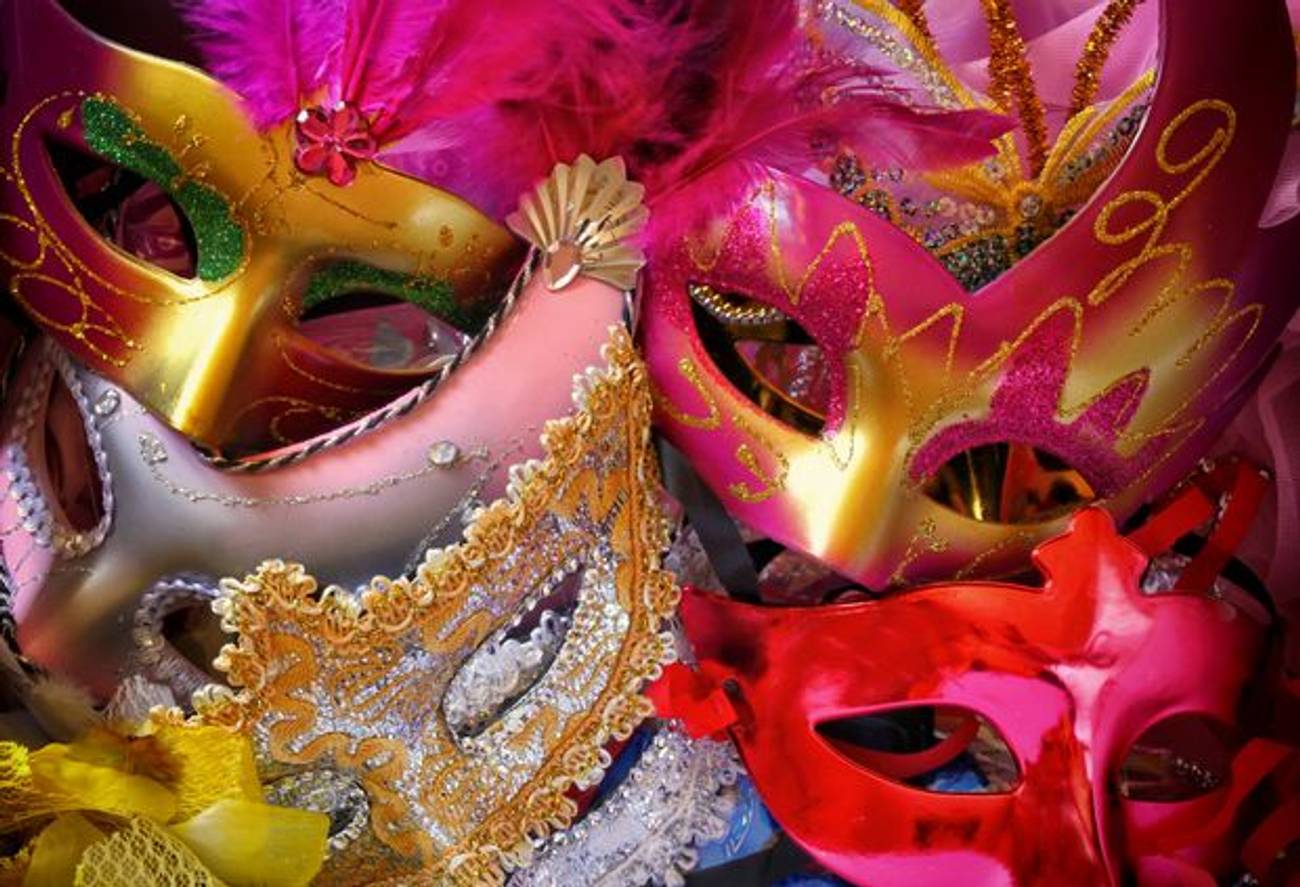The Origins of Your Favorite Purim Customs
Costumes, revelry, and satire weren’t always synonymous with the holiday




For many children and adults alike, what makes Purim Purim are the customs that turn it into a celebration of topsy-turviness. While sometimes entertaining and usually innocuous, these customs—drunkenness, farcical plays, costumes—remain a contentious matter in Jewish law and raise larger questions regarding the underlying meaning of the holiday.
The only raucous Purim custom with Talmudic roots is the notion of getting drunk on the holiday. The Talmud seems initially to encourage intoxication at Purim feasts, even as it cautions against the potential dangers. While some medieval figures continued to argue in favor of getting drunk—or, at the very least, getting tipsy—others strongly objected. The fear of inappropriate behavior led two prominent 20th century scholars, Rabbis Yisrael Kagan and Yehiel Epstein, to advocate against it, a position hard to ignore given the many dangerous alcohol-related incidents that take place yearly.
Another controversial custom is the performance of parodic plays—Purimspiels—or Purim Torah, an activity that uses the style and content of legal discourse to make jokes. Even when well-intentioned, the line between humor and irreverence can be crossed, and the frequency of personal insult from these jests has led many to object to them. This was particularly true when students would mock their teachers, with many contending that such denigration of Torah scholars is never permitted, even if the teachers previously consented.
Purim costumes originated as a medieval folk custom in Ashkenazic lands, leaving rabbinic scholars to discuss the propriety of the practice. One prominent discussion was written by a 15th century German scholar who had moved to Padua. He permitted the wearing of masks, despite the opposition of some earlier figures, and even justified men and women wearing clothing of the opposite gender, despite the biblical prohibition against cross-dressing. This ruling was affirmed in the authoritative code of Jewish law by Rabbi Moshe Isserles, who further permitted donning costumes with shatnez (clothing made from prohibited cloth combinations), since the intent was to celebrate Purim, and not to inappropriately benefit from the forbidden behavior. As Yaakov Spiegel has documented, cross-dressing costumes were a phenomenon at many medieval holiday and life cycle celebrations, including Simhat Torah and weddings, even as they sometimes drew rabbinic condemnation.
Where does the practice of dressing up come from? Some have speculated that it commemorates how Mordechai was dressed in regal clothing, a clear turning point in the plot of the Purim story. Others believe that hiding one’s identity symbolizes how God’s hand was involved in the miraculous salvation, even though His name is never explicitly mentioned in the text of the story. Noting that Esther similarly hid her own identity, Zohar Hanegbi further contends that perhaps the intention is to mimic the many costume parties of the story. Whatever its commemorative message might be, several rabbis and historians have claimed that this folk custom imitated medieval European Christian carnivals (e.g. Fastnacht or Mardi Gras) which took place at around the same season. If true, this would be akin to the development of the contemporary American custom of Hanukkah presents during the “holiday season.”
Still, many have had reservations. The 17th century Italian scholar Shmuel Abuhab viewed the wearing of costumes as a form of debauchery that detracted from the religious joy that one should feel on the holiday. Some particularly discouraged the pious from donning costumes, while others, like Rabbi Ovadya Yosef, banned cross-dressing for all.
Costumes that are in good taste, however, remain within the letter of the law and the scope of historical practice. Yet it behooves us to recall the meaning given to the custom by the Hasidic sage Avraham Yehoshua Heschel of Apt. He noted that a person experiences joy and laughter when confronted with something unexpected, like a familiar friend who suddenly appears looking different. This was the experience of the Jewish people in the time of Mordechai and Esther, whose expected day of massacre was suddenly turned into a holiday. As the Bible declares, “Ve-Nahafokh Hu”—the opposite happened, and the Jews got their enemies in their power. In our topsy-turvy world, in which the Jewish people face many challenges, perhaps this is the message to recall as we dress our children in their favorite costume.
This essay was adapted from A Guide to the Complex: Contemporary Halakhic Debates (Maggid), winner of a 2014 National Jewish Book Award.
Rabbi Dr. Shlomo M. Brody is the executive director of Ematai and the author of Ethics of Our Fighters: A Jewish View on War and Morality (Maggid Books).